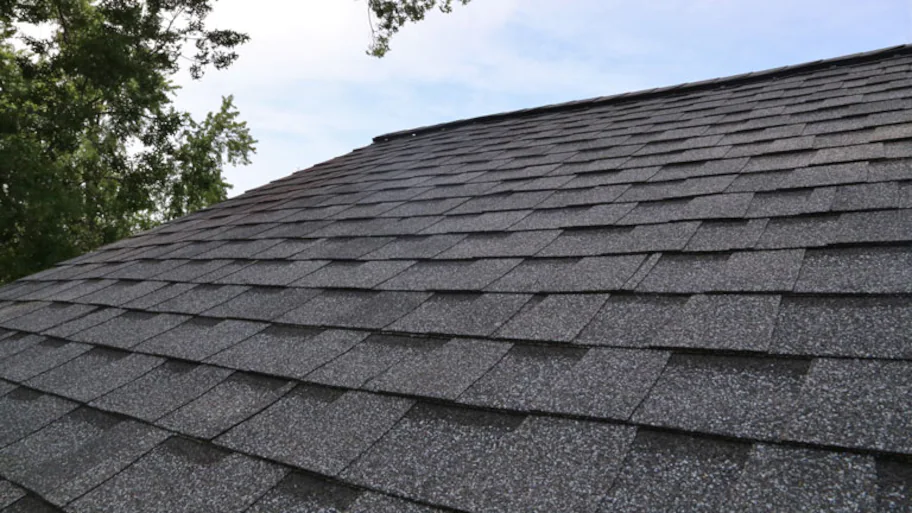The Benefits of Collaborating With Gainesville FL Roofing Companies
The Benefits of Collaborating With Gainesville FL Roofing Companies
Blog Article
Finest Practices for Ensuring Correct Roof Ventilation
Making sure correct roofing ventilation is important for the longevity and effectiveness of a roof system. A balanced intake and exhaust vent ratio, frequently 1:300, plays an essential role, with consumption vents ideally put at the reduced side of the roof for awesome air entry and exhaust vents at the peak for warm air leave. Regular evaluations to recognize obstructions and keep clear air flow are extremely important. Moreover, keeping insulation far from vents is vital to avoid air movement restriction. Recognizing these foundational components establishes the phase for more detailed understandings right into setup and upkeep practices that can significantly boost your roof covering system's performance.
Understand Air Flow Basics
Properly understanding ventilation essentials is important for ensuring the long life and efficiency of roof. Reliable air flow alleviates moisture buildup and temperature extremes in the attic, both of which can cause substantial architectural damage with time. A well-ventilated roofing aids in protecting against typical problems such as mold growth, timber rot, and ice dams, which can jeopardize the integrity of the roof covering materials and the underlying structures.
The primary objective of air flow is to promote the motion of air, enabling a regular exchange in between the indoor and outside environments. This balance is accomplished with a combination of intake and exhaust vents that function with each other to preserve optimal air movement. Consumption vents, normally situated along the eaves or soffits, allow fresh air to enter the attic room room, while exhaust vents, commonly situated at or near the roof covering ridge, enable warm, humid air to get away.
Key elements affecting the effectiveness of roofing ventilation consist of appropriate placement, appropriate sizing, and making certain that both intake and exhaust vents are unblocked. Regular examination and upkeep are crucial to recognize potential blockages, damages, or ineffectiveness in the ventilation system, thus securing the roofing system's performance and resilience.
Kinds of Roof Covering Vents
Roofing vents play a crucial function in preserving reliable attic air flow and, by expansion, the overall health of the roof. Various sorts of roof covering vents are readily available, each with distinct advantages tailored to details roof covering requirements. Ridge vents, for instance, are installed along the roofing's height, enabling cozy, humid air to leave from the attic room. They use continual air flow and blend perfectly with the roofline, making them both efficient and visually pleasing.

Soffit vents are mounted under the eaves and work in tandem with roof covering vents to make certain a balanced consumption and exhaust system. By allowing cooler air to go into from below, soffit vents promote the expulsion of warm air with upper vents. Gable vents, situated on the exterior walls of the attic room, deal one more reliable option, particularly in homes with saddleback roofs.
Evaluate Your Present Ventilation

Next, think about the age and problem of your roofing materials and ventilation components. Older systems might not adhere to current building ordinance or might have worn away gradually, minimizing their efficiency. Conduct a comprehensive examination to recognize any signs of deterioration, such as rust, damage, or voids that might jeopardize the system's efficiency.
In addition, gauge the attic room temperature level and moisture levels. High temperatures and moisture can indicate insufficient ventilation.
Installation Best Practices
Effective installation of roofing ventilation systems is extremely important for making sure optimal performance and long life. Correct installment starts with comprehending the certain look at this now ventilation requirements of the building and the roofing system it covers. This involves calculating the correct ratio of intake to tire vents, generally adhering to the 1:300 policy, which states one square foot of ventilation for every single 300 square feet of attic room flooring room.

The placement of vents is similarly essential. Consumption vents need to be mounted at the roofing system's reduced side, often in the soffits, to permit trendy air to go into. Exhaust vents, on the other hand, must be mounted near or at the roof covering's peak to facilitate the exit of warm, wet air. This produces an all-natural air movement that assists preserve temperature level and dampness balance within the attic room.
Seal all air vent links diligently to prevent air leaks and possible water infiltration. Use top quality products and comply with maker standards to ensure durability and effectiveness. Furthermore, integrating ridge vents with baffles can substantially enhance airflow efficiency by check my site avoiding wind-driven rainfall and snow from getting in the attic room.
Inevitably, specific installation of roofing ventilation systems mitigates potential problems such as mold and mildew development, ice dams, and structural damages, making certain the roofing system's honesty and the building's overall wellness.
Regular Maintenance Tips
Consistency in maintenance techniques is basic to ensuring the lasting effectiveness of roof air flow systems. During these inspections, make sure that vents are totally free of particles, nests, and various other obstructions that might restrain air flow.
Cleansing the vents is another essential task. Use a soft brush or a vacuum to eliminate dirt and particles from consumption and exhaust vents. Beware not to damage the air vent screens or louvers throughout the process. Furthermore, check the attic room for any indications of water damages, which can compromise the integrity of the roof system.
Correct insulation is just as essential. Ensure that attic insulation does not block the vents, as this can badly restrict airflow. If any insulation has changed or settled, reposition or change it to preserve an effective obstacle.
Finally, change any kind of harmed or missing components immediately. Damaged vents, cracked tiles, or worn-out flashing can all contribute to insufficient ventilation and must be addressed without delay. Normal maintenance makes sure that the roofing ventilation system operates optimally, consequently expanding the life expectancy of the roof covering itself.
Verdict
Ensuring appropriate roof covering ventilation is critical for maintaining the performance and resilience of a roof system. Adherence to the 1:300 consumption and exhaust air vent proportion, paired with the critical positioning of vents, is essential. Normal semiannual assessments, particles cleansing, and making certain insulation does not block air flow are vital techniques. Executing these best practices will certainly foster a well-ventilated roof, thus minimizing potential problems connected to moisture buildup and too much warm, eventually prolonging the roof's lifespan.
A balanced intake and exhaust air vent proportion, typically 1:300, plays an essential role, with intake vents ideally put at the reduced side of the roofing system for great air access and Discover More exhaust vents at the top for warm air departure. Intake vents, generally situated along the soffits or eaves, allow fresh air to get in the attic room space, while exhaust vents, frequently situated at or near the roofing ridge, enable warm, damp air to run away.
Soffit vents are set up under the eaves and job in tandem with roofing vents to ensure a balanced intake and exhaust system. By enabling cooler air to get in from below, soffit vents promote the expulsion of warm air with upper vents. Adherence to the 1:300 consumption and exhaust air vent proportion, combined with the critical positioning of vents, is crucial.
Report this page